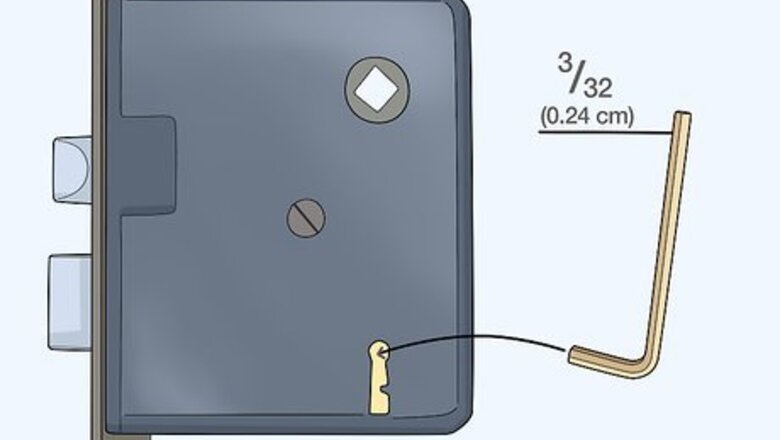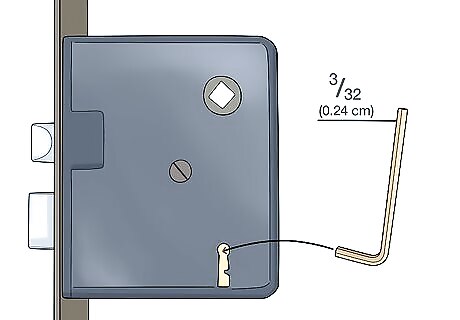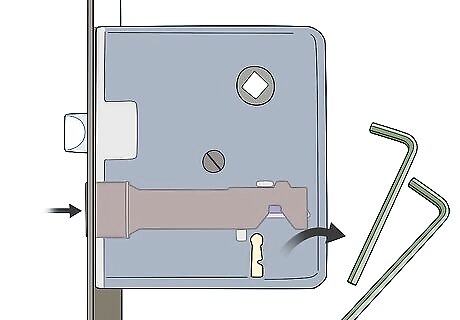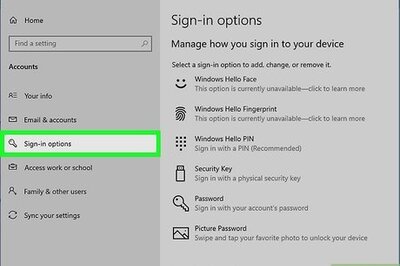
views
Lifting the Lever

Insert a ⁄32 inch (0.24 cm) allen wrench into the lock hole. This is the hole where you would insert a key if you had one. If it’s too small for the ⁄32 inch (0.24 cm) wrench, go down to the next size, ⁄64 inch (0.20 cm). If you don’t have an allen wrench, you could use a sturdy piece of wire bent into a 90-degree angle at one end. The reason allen wrenches work so well on skeleton key locks is that they have that 90-degree angle. Using something straight like a bobby pin or nail wouldn’t work because they wouldn’t be able to twist up to engage the lever and deadbolt.

Wiggle the wrench around to find the lever. It often helps to insert the wrench and then press it as close as possible to the side of the lock that is facing you. From there, you should be able to push up and feel the lever moving. Move the wrench back and forth and up and down in the lock until you feel resistance that gives way when you push up. A skeleton lock is made of two basic parts: a lever and a deadbolt. The lever sits on top of the deadbolt and moves up and down. If you feel the lever moving up and down but don’t experience any resistance, that may mean that the interior spring is broken. If that’s the case, you won’t be able to pick the lock yourself. Try calling a locksmith, instead.

Engage the lever and switch the wrench to your non-dominant hand. If you lose the lever, just readjust the position of the allen wrench until it’s pushed up once again. It can take quite a few tries before you manage to hold it in place, so don’t get discouraged. Picking a skeleton lock is a two-handed job. Unlocking the deadbolt includes more movement and finagling, which is easier if you use your dominant hand.
Unlocking the Deadbolt

Insert a second allen wrench behind the first one. Keep the lever pushed up and put the second wrench into the hole, hooking it behind the other one. If it won’t fit into the hole, use a smaller wrench or sturdy piece of wire. An actual skeleton key is shaped so that it will simultaneously push up the lever while opening the deadbolt. Since you don’t have a key, you’re essentially crafting your own makeshift key out of two pieces of metal.

Twist the second allen wrench clockwise to unlock the deadbolt. As you turn the second allen wrench, feel for the resistance of the deadbolt. Keep twisting the wrench until the deadbolt slides back and the lock is picked. If you need to lock a skeleton lock, you’ll follow the same process except you’ll turn the second wrench counterclockwise.

Remove both wrenches from the lock once it has unlocked. Once that deadbolt has been pushed back, you should be able to turn the handle or knob to open the room, drawer, or antique. Skeleton locks were commonly used in old houses and pieces of furniture, so knowing how to pick them can come in handy if you collect antiques or are moving into a home that no longer has its original skeleton keys. If the door or drawer still won’t open even after you felt the deadbolt move, the spring to the handle itself may be broken or loose. The only way to access that part of the lock is to remove the lock and open up its backplate. You may need to call out a locksmith to help with that process.




















Comments
0 comment